The Passage of the Secrets forward, page 4
Symbols
A wall sized mural uncovered at Tell Ghassul, which was occupied from before 4000 BC to circa 2000 BC, "depicted a row of people - the first two of whom were seated on thrones - facing toward (or greeting) another person who had apparently stepped out of an object emitting rays.
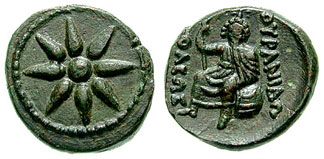 "The archaeologists who
had discovered these murals during the
1931-32 and 1932-33 excavations theorized that the rayed object
might have been similar to a most unusual rayed 'star' found
painted in another building. It was an eight-pointed 'star'
within a larger eight-pointed 'star,' culminating in a burst of
eight rays. The precise design, employing a variety of
geometric shapes, was artistically executed in black, red, white,
gray, and combinations thereof; a chemical analysis of the
paints used showed that they were not natural substances but
sophisticated compounds of twelve to eighteen minerals.
"The archaeologists who
had discovered these murals during the
1931-32 and 1932-33 excavations theorized that the rayed object
might have been similar to a most unusual rayed 'star' found
painted in another building. It was an eight-pointed 'star'
within a larger eight-pointed 'star,' culminating in a burst of
eight rays. The precise design, employing a variety of
geometric shapes, was artistically executed in black, red, white,
gray, and combinations thereof; a chemical analysis of the
paints used showed that they were not natural substances but
sophisticated compounds of twelve to eighteen minerals.
"In fact, we have come upon a similar design in Washington, D.C. It can be seen in the foyer of the headquarters of the National Geographic Society: a floor mosaic of a compass denoting the Society's interest in the four corners of the Earth and their intermediate points (east, northeast; north, northwest; west, southwest; south, southeast). It was this we believe, that the design's ancient painters, too, had in mind: to indicate their, and the place's association with the four regions of the Earth.
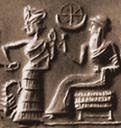 . "The mural's discoverers assumed that the eight-rayed 'star' had some
'religious significance,' pointing out that the eight-pointed star, standing for
the planet Venus, was the celestial symbol of Ishtar. "....There is no evidence
of any religious worship whatsoever, no "cult objects," statuettes of gods, etc....
This, we suggest, indicates that it was inhabited not by worshippers but by those
who were the subject of worshipping: the "gods" of antiquity, the Anunnaki
. "The mural's discoverers assumed that the eight-rayed 'star' had some
'religious significance,' pointing out that the eight-pointed star, standing for
the planet Venus, was the celestial symbol of Ishtar. "....There is no evidence
of any religious worship whatsoever, no "cult objects," statuettes of gods, etc....
This, we suggest, indicates that it was inhabited not by worshippers but by those
who were the subject of worshipping: the "gods" of antiquity, the Anunnaki
Zecharia Sitchin, The Wars of Gods and Men .. and see Fireplug's site
The 'eight' rayed star it turns out, is the planet from which these visitors came. Nibiru as seen on our 'Forbidden Knowledge page at one time occupied the space ajacent to our Earth closer to the Sun. Earth being the 'Seventh' planet from the outside of our solar system. Seven plays an important role in the 'counting' of biblical events including the days in a week. And 'twelve' is the total number of solar objects in our solar system. The twelve zodiacal signs are assigned due to these 12 planets.
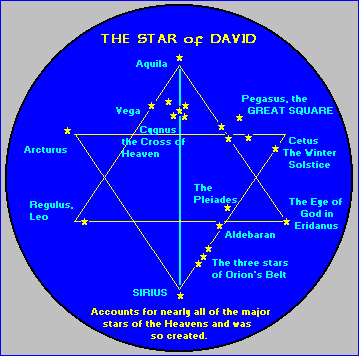 Amulet of Solomon - Or the "Seal of Solomon, is also known as
the “Star of David”. This a powerful symbol with magical
qualities (it is also a seal against evil, in early Celtic
magic). As an amulet, the Seal of Solomon is believed to
offer protection against both evil and enemies. It also
brings good luck in all aspects of life.
Amulet of Solomon - Or the "Seal of Solomon, is also known as
the “Star of David”. This a powerful symbol with magical
qualities (it is also a seal against evil, in early Celtic
magic). As an amulet, the Seal of Solomon is believed to
offer protection against both evil and enemies. It also
brings good luck in all aspects of life.
Notice the three stars of 'Orions Belt'.
King Solomon (970-928 BC) Before David died, he appointed his son Solomon, only 12 years old, as king. After Solomon was anointed king, God appeared to him in a dream, inviting him to make a request for himself. Pleased that Solomon requested not riches and honor, God granted King Solomon great wisdom. He is known as chacham mi'kol ha'adam, "wisest of all the men." The bible states, that that kings from all over the world traveled to Israel to hear his wisdom - which not only was from the Torah wisdom, but secular knowledge and science. He composed 3,000 parables and 1,005 poems. His crowning achievement was building The Temple, which his father, King David, envisioned. It took seven years to build and the Bible devotes several chapters its construction.
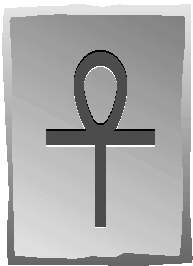 The Egyptian ankh, used in the rite of reanimation, may also symbolize
the supernova. - This symbol represents both Physical and Eternal life. It is also known
as the original cross, a powerful symbol that was first created by Africans in Ancient Egypt.
It also represents the power to give and sustain life. When worn or carried, the ankh
brings good health, promotes fertility, and strengthens the psychic powers.
The Egyptian ankh, used in the rite of reanimation, may also symbolize
the supernova. - This symbol represents both Physical and Eternal life. It is also known
as the original cross, a powerful symbol that was first created by Africans in Ancient Egypt.
It also represents the power to give and sustain life. When worn or carried, the ankh
brings good health, promotes fertility, and strengthens the psychic powers.
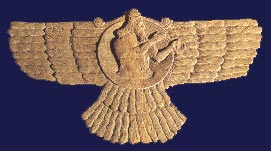 Ea (ENKI) is a new
concept which combines the Constellation of Orion,
and the Sacred Waters of Nun as the Constellation of Eridanus,
fanning out behind him like a pair of wings. In effect the god Ea
is the Sumerian equivalent of the Celestial Sphinx! Ea was
later adapted into the figures of Moses and John the Baptist.
Jesus is the Risen Sun/Son baptized in the waters of the sacred
Waters of Nun.
Ea (ENKI) is a new
concept which combines the Constellation of Orion,
and the Sacred Waters of Nun as the Constellation of Eridanus,
fanning out behind him like a pair of wings. In effect the god Ea
is the Sumerian equivalent of the Celestial Sphinx! Ea was
later adapted into the figures of Moses and John the Baptist.
Jesus is the Risen Sun/Son baptized in the waters of the sacred
Waters of Nun.
The Sumerian (Anunnaki) Royal Family
The Sumerian myth has Apsu as the primordial father, his consort is Tiamat, the Dragon Queen (who was also called Mother Hubbur), along with their son Mummu. Mummu's brothers and sisters are two male and female 'parts' - first Lahmu and his sister Lahamu, and then Anshar and his sister Kishar. The stories of this deiform family date back thousands of years and are largely concerned with the very dawn of earthly time when the world was brought forth out of a watery chaos.
Anshar and Kishar produced a son who was to reign overall; this son was Anu. Anu's consorts were his sisters; Antu, Lady of the Sky (also called Nammu) and Ki, the Earth Mother ( also called Urash) the Anunnaki also became known by their alternative Semitic names used in Akkad and later Babylonia.
Anu has two sons. Enlil or Ilu, Lord of the Air (whose mother was Ki) and Enki or Ea, Lord of the Earth and waters (whose mother was Antu or Id) Enki (meaning 'archetype') had two wives, one of whom was the goddess Damkina, the mother of Marduk who became the god of the Babylonians. Enki's other wife was his half sister Nin-khusag also known as the 'Lady of Life'.
Enki is Anu's first son, but Enlil was Anu's son by his half sister Antum which made him higher up on the ladder of succession than Enki. Enki birthright was robbed from him just like Abrahams' son Ishmael when his wife/The Kings sister Sarah bore Isaac.
Enki's brother Enlil was also espoused to Nin-khursag, and their son was Ninurta (Ningirsu), the Mighty Hunter. By his other wife Ninlil (Lilith) or Sud, whom he raped, Enlil's second son was Nanna (or Suen) known as the 'Bright One'. Just like Cain, Enlil was sentenced to exile in Abzu. He was pardoned only after he married her. Abzu was in Africa and it means 'gold' in reverse. A mining community in Abzu was then under the command of Enki. Enlil lived at Nippur until his exile.
"...The organization of the cosmos parallels the organization of an estate with its varied tasks. In the myth called 'Enki and World Order" we hear how Enki organized the cosmos for Enlil in just such terms. He instituted the regime of the Euphrates and the Tigris, appointed the god Enbilulu as divine 'inspector of canals', and he arranged the marshes and the sea, appointing divine officials to take charge of them.
Next he organized the rains and put Ishkur in charge. There followed the instituting of agriculture: ploughing, irrigation, and harvesting, the appointment of the farmer god Enkimdu and the grain goddess, Ezinu. After agriculture came brickmaking and the builder's craft under the brick god, Kulla, and the divine architect, Mushdama; and in similar manner Enki organized the wild life of the desert, founded husbandry, fixed boundaries, set limits for building plots and fields, and instituted weaving - in each case appointing appropriate gods to the offices of supervision.
"The god whom Enki placed in charge of boundaries was the sun god
Utu, god of justice, and the universal scope of his
responsibilities is underlined in the myth by the words 'for
heaven and earth'."
- Thorkild Jacobsen, The Treasures of Darkness
In Sumer, the storm god who eventually became known as Jehovah or Yehwah was also called 'Enlil' or 'Ilu-kur-gal' (meaning 'Ruler of the Mountain'), and his brother, who became Adon, was called 'Enki'.
Comparison in the Nag Hammidi Scrolls
Adoni is mentioned by Christ as Adonaios. "And all these, with the race, that came down, flee from him who had fled from the throne to the Sophia of hope, since she had earlier given the sign concerning us and all the ones with me - those of the race of Adonaios." 'For Adonaios knows me because of hope." from the Second Treatise of the Great Seth.
'Knowledge is not evil', says the Nag Hammidi, because
Sophia (wisdom) gave it to Eve, whereby she might teach Adam.
Sophia/Eve teaches Adam the sciences, the arts and the good
virtues of YHWH. (God has no name so we call him YHWH here.)
In the 'dark ages' people were apparently taught that knowledge was evil
by a controling organized church who worshiped a jealous, feared,
human hating god.
|
Factual history The Romans were, after all, straight-laced moralists, and nothing got their attention better than a good, stern moral lecture. So, overall, the character of first century and second century Rome is a moralistic character, in which either the psychology of immorality as both seductive and destructive is explored by some writers, while other writers, such as Seneca and Tacitus, sternly condemn the degeneracy of the age. This period also saw the introduction of Christianity into Europe and the Roman Empire. Originally a Jewish religion, it was spread to the Greek world by the early apostles. In particular, a late follower of Christianity, Paul of Tarsus devoted his life to translating Christianity into a form that would be acceptable by Greeks and Romans. On the whole, however, the Romans didn't pay much attention to the Christians, since they were small in numbers which were largely confined to women and children. Both Nero and Domitian persecuted Christians for political reasons, but on the whole, the Romans left them alone. It wasn't until the third and fourth centuries that Christianity grew dramatically in the Roman Empire (along with other mystery religions), until it was finally declared the state religion by the emperor Constantine...but not until 325 A.D. |
But the story of Enlil and Enki is over 8000 years old!
Enlil is the same character as Jehovah and is the jealous god...or the god that creates storms and war and inflicts hardships on mankind. In contrast, his brother Enki knew that humans who partook of the Tree of Knowledge (the Anunnaki wisdom) and of the Plant of Birth (the Anunnaki Star Fire) could themselves become almost like gods. Even Jehovah was said to have recognised this, and Genesis states that when Adam had taken the fruit of the Tree, Jehovah said, "Behold, the man is become as one of Us". But in the Nag Hammidi, Enlil or Yaldabaoth still doesn't know about the True God, and thinks he is the only God. The Sumerian texts relate that Enlil is jealous of Enki.
Enlil's second son was Nanna (or Suen) known as the
'Bright One'. This is the second explaination of the origin
of the term "Light Bearer".
It means certain knowledge ( Light )
has came from an ignorant being who wished harm or control over
Adam and Eve, and wished to compete with the true God, YHWH, as
ruler. Actually Enlil is inferior and doesn't want humans to have
any knowledge.
He teaches Eve to ignore the true God ( the serpent,ie. knowledge )
and he tells them he is the 'only god'. So the story in the KJB
continues that a creature called 'a serpent' tempts Eve
with this fruit. The fruit susposedly contains evil teachings or is poison
but that is not made clear anywhere and it is an assumed conclusion,
not fact.. He just tells them they will die if they eat it.
But that isn't what happened at all! They eat and they understand the difference between good and evil. Thus we already have a different interpretation of the apple and it's secrets than what the KJB portrays. The apple, in effect is fruit from the tree of knowledge and this is a good thing. Masonic teaching says that the pomegranate and it's seed was a medifore for 'error'. In Greece Persephone tells her mother how she was seduced against her will. "He cunningly placed sweet sugared food in my hand, a pomegranate seed, and forced me to eat it despite myself". (Homeric Hymn to Demeter) Symbols of Freemasonry, page 46
Medifores were used quite frequently in ancient teaching, thus the apple and the serpent were interpretated in a literalist sense by translators who were translating Greek to Latin ect. The apostles however wrote in Aramac as did Jesus. So we tend to wounder if his sayings were interpretated correctly. We also woundered why the god in Genesis lied to Eve. We also see that their shame had nothing to do with sexuality. Animals do not wear cloths. Until Adam and Eve have 'knowledge' they are like animals which is confirmed by them eating 'green things' like grass.
We also have a clear picture of who or more precisely, what the good god really is. He is love, he is compassion, he is truth. He is intelligence, he is knowledge, he is consciousness, he is literally life. He organizes everything. Enlil on the other hand creates chaos.
The "light Bearer"; He is called the demiurge
by the Gnostics. They also taught that the demiurge was a
subordinate deity who created and ruled our world and proclaimed
to be the true God. This God created death because he hates humans.
God the Father cannot be
comprehended, is unknown and has no connection with this world.
He is the Father of 'light' or knowledge who sent
a (son) savior (teacher) to help us return to him.
The demiurge god is not the Eternal Mind of YHWH. This is a jealous, conniving god of the material world who doesn't want us to figure out who and what he really is, or what he has done to the inhabitants of earth. The Gnostics say this god is not evil, he is just ignorant. We have a chance to understand this by studying written works not put in the King James Bible. Our other source which seems to back up the Sumerian tablets is the Nag Hammidi Library. These works were written by the Christ and the Disciples of Christ and discovered in Egypt, in 1947. They are not fake or made-up because they align with and contain the same material of the teachings of Enoch, Moses, Solomon and Christ as we know them. If compaired with the known words of Noah, (Passage page 6) the similiarities in the characters, descriptions and story told are the same. However these teachings are completely consistent with Gnostic knowledge and teaching.
The Knights Templar were Gnostic. Every true follower of the
real Jesus was Gnostic which derived from a Nazarene sect in 800 B.C..
As we mentioned, the Jews, the Roman church and others
tried to destroy these teachings because we feel they did not
know the true God. This began in Babylon, but it did not
originate with Nimrod.
A reference is made in the works of Enoch that the truth would be
discovered in 'another age'. This now is the age because the
return of the Christ is approaching.
Matthew 13:35, "I will utter things which have been kept secret from the foundation of the world."
Genesis 1:21; whales - The original Hebrew text reads: "And God created great tanniyan." The Hebrew word for tanniym means dragons, but the translators of the King James version wrote whales, perhaps because that was the biggest real creature they knew to exist at the time. There could be many other misinterpretations, as we will see shortly.
The Bible explains that the 'bloodline' story began with Adam and Eve, from whose third son, Seth, evolved a line which progressed through Methuselah and Noah, and eventually to Abraham who became the Great Patriarch of the Hebrew nation. It then relates that Abraham brought his family westwards out of Mesopotamia (Ur in present-day Iraq) to the land of Canaan (or Palestine), from there some of his descendants moved into Egypt. After a few generations they moved back into Canaan where, in time, the eventual David of Bethlehem became King of the newly defined Kingdom of Israel.
The earliest Hebrew writings (which were rehashed many centuries later) were themselves only written between the 6th and the 1st centuries BC, so they were not likely to be that authentic in their telling of history from thousands of years before. Indeed, it was plain that this would be the case, because when these books were first written their express purpose was to convey a history which upheld the principles of the Jewish faith - a faith that did not emerge until well into the ancestral story. (We borrowed this and the following from - now off-line) Star Fire by Laurence Gardner because it explains the historical difference between bible versus and what we are about to tell you.)
The Gospel texts that have been in the public domain for centuries bear little relation to the first-hand accounts of the era. The New Testament, as we know it, was compiled by the 4th-century bishops to support the newly contrived Christian belief. But, what if the Jewish scribes had previously done exactly the same thing with the Old Testament?
A further book, to which attention is specifically drawn in the Old Testament books of Joshua and Samuel, is the Book of Jasher. But despite its apparent importance to the Hebrew writers, it was not included in the final selection.
Two other works are also cited in the Bible. The Book of Numbers draws our attention to the Book of The Wars of Jehovah which are probably best explained in Zecharia Sitchen's Wars of Gods and Men. And in the Book of Isaiah we are directed towards the Book of the Lord or 'Book of Enki'.
What are these books? Where are these books? They are all mentioned in the Bible (which means they all pre-date the Old Testament), and they are all cited as being important. So, why did the editors see fit to exclude them when the selection was made?
In pursuing an answer to this question and in studying the substance of the Old Testament prior to its corruption, one fact which becomes increasingly clear is that in English-language Bibles the definition 'Lord' is used in a general context, but in earlier texts a positive distinction is drawn between 'Jehovah' and 'the Lord'.
The answer is that, although now seemingly embraced as 'the One God' by the Jewish and Christian churches, there was originally a distinct difference between the figures of Jehovah and the Lord. They were, in fact, quite separate deities. The god referred to as 'Jehovah' was traditionally a storm god, a god of wrath and vengeance, whereas the god referred to as 'the Lord' was a god of fertility and wisdom. As for the apparent personal name of Jehovah, this was not used in the early days, and even the Bible tells that the God of Abraham was called 'El Shaddai', which means 'Lofty Mountain' and is a direct reference to Enlil, a god of storms and war.
'Jehovah' was therefore not a name at all, and early texts refer simply to 'El Shaddai' and to his opposing counterpart, 'Adon'. To the Canaanites, these gods were respectively called 'El Elyon' and 'Baal' - which meant precisely the same things as 'Lofty Mountain'. In our modern Bibles, the definitions 'God' and 'Lord' are used and intermixed throughout, as if they were one and the same character, but originally they were not. One was a vengeful god (a people-hater), and the other was a social god (a people-supporter), and they each had wives, sons and daughters.
The old writings tell us that throughout the patriarchal era the Israelites endeavoured to support Adon, the Lord, but at every turn El Shaddai (the storm god, Jehovah) retaliated with floods, tempests, famines and destruction. Even at the very last (around 600 BC), the Bible explains that Jerusalem was overthrown at Jehovah's bidding and tens of thousands of Jews were taken into Babylonian captivity simply because their King (a descendant of King David) had erected altars in veneration of Baal, or El Shaddai. ( Somehow Adon, became identified with Baal, but Baal is susposed to be the evil deity. Right?)
It was during the course of this captivity that the Israelites weakened and finally conceded. They decided to succumb to the 'God of Wrath', and developed a new religion out of sheer fear of his retribution. It was at this time that the name of Jehovah first appeared - and this was only 500 years before the time of Jesus.
Subsequently, the Christian Church took Jehovah on board as well, calling him simply 'God' - and all the hitherto social concepts of the Adon were totally discarded. The two religions were henceforth both faiths of fear. Even today, their followers are classified as 'God-fearing'.
But what did the ancient Sumerians call these two gods? What were their personal names? We can trace the Sumerian written records back to about 3700 BC, and they tell us that the gods in question were brothers. In Sumer, the storm god who eventually became known as Jehovah was called 'Enlil' or 'Ilu-Kur-gal' (meaning 'Ruler of the Mountain'), and his brother, who became Adon, the Lord, was called 'Enki'. This name is really important to our story because 'Enki' means 'Archetype'. Further reference ties Abraham to this Ilu-Kur-gal or Enlil.
The texts inform us that it was Enlil who brought the Flood; it was Enlil who destroyed Ur and Babylon, and it was Enlil who constantly opposed the education and enlightenment of humankind. Indeed, the early Syrian texts tell us that it was Enlil who obliterated the cities of Sodom and Gomorrah on the Dead Sea - not because they were dens of wickedness, as we are taught, but because they were great centres of wisdom and learning. Sitchin informs us that the Anunnaki knew the flood was coming and they voted not to tell human kind.
It was Enki, on the other hand, who, despite the wrath of his brother, granted the Sumerians access to the Tree of Knowledge and the Tree of Life. It was Enki who set up the escape strategy during the Flood, and it was Enki who passed over the time-honoured Tables of Destiny - the tables of scientific law which became the bedrock of the early mystery schools in Egypt.
The Bible does name Cain's eldest son as Enoch, while the Sumerian records cite his elder son and kingly successor, Atûn, who is perhaps better known as King Etana of Kish. The Star fire web page says Cain is the first of the kingly royal bloodline, which produced Enoch, but we disagree with this account. Since, in the Nag Hammidi Library in the Second Treatise of the Great Seth we find a deity who calls himself 'Seth', we still align him as being the first son in the Royal bloodline. Enoch was not Cain's son and we will prove this in a minute.
Etana (Enoch) was said to have 'walked with the gods', and to have been fed from the 'Plant of Birth' (or the 'Tree of Life', as it is called in Genesis). Henceforth, the kings of the line were designated as being the twigs of the Tree - and the ancient word for 'twig' was klone (clone). In later times this 'Plant' or 'Tree' was redefined as a 'Vine', and so the Gra-al, the Vine and the Messianic Bloodline became conjoined as one in the literature of subsequent ages.
By virtue of their contrived breeding, this kingly succession was modelled specifically for leadership, and in all aspects of knowledge, culture, awareness, wisdom and intuition they were highly advanced against their mundane contemporaries. In order to keep their blood as pure as possible, they always married within a close kinship.
It was fully recognised that the prominent gene of the succession was carried within the blood of the mother. Today we call this the 'mitochondrial DNA'. And so was born a tradition inherited by their kingly descendants in Egypt and by the later Celtic rulers of Europe. True kingship, it was maintained, was transferred through the female, and so kingly marriages were strategically cemented with maternal half-sisters or first cousins, which was the practice in Egypt.
Thus, what the clay tablets of ancient Ur (Mesopotamia) and the codexs of Nag Hammidi Library tell us is very different from the KJB version. The Nag Hammidi codex's were not written with a Hebrew or Christian tint and do not maintain any particular religion. They simply state that it is 'truth'. Jesus refers to this 'truth' many times in the parables of the NT. He maintains over and over that the people are 'blind and deaf' and refuse to 'see' the 'truth'. It is also difficult to believe there is another being that calls itself God, but we will try and prove this and connect these three very different sagas.
Another fact is that most of us have a hard time comprehending things unseen, or never before explained, or mostly what is NOT in the KJB. This is not the reason God told Moses to write it down differently. What Moses wrote was either edited or he had an obligation not to reveal the mysteries of the true God.
The Ten Commandments; The first set of Tablets Moses was given were the oral law or Secret doctrine which revealed the higher order of liberation and mercy that was encompassed in the Tree of Life. The Inner meaning of the tablets remained with the elders, and all the secrets were passed down orally. Moses' intention was to deliver the truths that set man free, but the people's actions resulted in Moses giving a surrogate law, that is, the present Ten Commandments. The Emerald Tablet specifies that 'the mysteries' were meant to be taught only to 'initiates' and that continued as the end result.
Moses had tried to write the 'mysteries' down to teach them to the people, but the worship of the calf and the orgies he caught them engaged in changed his mind. This means Moses already knew the 'Two God' theory because of the Emerald Tablet and the fact that he had been trained for 40 years about the 'other gods'. The Jews obviously discarded this as nonsense or wouldn't acknowledge it because it came from Egyptian sources. We have already learned that the Hebrews came from Hyksos origins and the Hyksos worshiped Baal or an ignorant, jealous, vengeful deity. Their actions proved this - because they were afraid of him.
Moses was not the first to be given the secret doctrine. The secret doctrine was originally given to Abraham by The angel Raziel. It contained the source of all knowledge including the Hebrew letters. The holy mystery of wisdom was embodied within it, as the secret doctrine described the power resident in the devine names of God. Abraham was instructed to keep the knowledge concealed, but when he sinned, it was lost. The angel Raphael eventually gave it back to him. Abraham passed it on to his son Isaac, who passed it on to other emmissaries, who spread it throughout the land. It became known as The Book of Enoch.
In Judges 10:6 it is stated that the Israelites, after the death of Moses, 'did that which was evil in the sight of Jehovah, and served the Baalim and the Ashteroth...and they forsook Jehovah and served him not'..... So maybe he did get through to them afterall.
But we now know that Baalim was Enlil not Enki. The Jews thought that Enki (Adon) was the false God because they were afraid of Jehovah (Enlil). So every time we see our biblical heroes destroy temples set up in worship of Baal, are we really being told the truth? Or is this just another instance of 'the blind leading the blind'? Ashteroth was Nin-khursag or Sophia (Wisdom).
The Qabala, which dates back well before Adam and Eve, to whom the secrets were disclosed by Enki, and Nin-khursag, who were jointly defined as the 'Tree of Knowledge'. The word Qabala relates to 'tradition' and 'how it was obtained'. It emphasizes the intuitive grasp of the absolute truth of the ancient Masters - The great Archons who brought forth the world out of primeval chaos. One of these Archons was 'Wisdom'(the Holy Spirit) was always female, moving on the face of the waters', as related in the second verse of Genesis at the very beginning of biblical time. Wisdom was Tiamat , Sophia, Ashtereth-Anath and, in general terms, Wisdom was the Shekhina (God's wife) who embodied them all.
Since Abraham's death, the secret doctrine had not been heard of. When Moses was given the doctrine, it remained secret until Rabbi Shimon came out of his cave and revealed the mysteries of the Zohar. He revealed that those who study the doctrine are set free from fear, and those who follow its path are on the path of love.
The death of Moses was caused by a "Supreme Mystery", and
legend within the Zohar suggests Moses did not die.
The Zohar suggests that Moses will return at the end of time to
fulfill his mission and reveal the "true name of Shekhinah".
Richard Siblerud, Keepers of the Secrets
"He [the Lord] said, 'Surely they are my people, sons who will not be false to me'; and so he became their Savior. In all their distress he too was distressed, and the angel of his presence saved them. In his love and mercy he redeemed them; he lifted them up and carried them all the days of old. Yet they rebelled and grieved his Holy Spirit. So he turned and became their enemy and he himself fought against them." Isaiah 63:9-10
"The Massoretic text as well as the Vulgate of Exod. iii and xix-xx clearly represent the Supreme Being as appearing to Moses in the bush and on Mount Sinai; but the Septuagint version, while agreeing that it was God Himself who gave the Law, yet makes it 'the angel of the Lord' who appeared in the bush." We discuss who this is on our "Ark of the Covenant" page.
So no one else would have believed Moses' idea of the true
god. And as the bible says, they didn't.
However remember, The Emerald Tablets
of Thoth strictly forbid any secret knowledge to be passed
to anyone other than a father or son. This is restated
in the Egyptian "Book of the Dead, which some say was
also written by Thoth, 36,000 years ago...
.but Enoch was told by God to teach what he was taught to his sons.
This aligns with old Masonic teaching and the teachings
recorded in the Dead Sea Scrolls pertaining to the 'Rules of
the Brotherhood'.
So Enoch is associated with Thoth and Hermes.
Enoch is the 'Father of the Brotherhood'.
In the Hebrew and the Egyptian, The High priest and the King or leader, were
the only ones who knew everything. The KJB tells us Moses was
'learned' of the Egyptians wisdom, but this was taught to him
in Thebes as a prince and son of an Egyptian King. What
Moses knew was not taught to him by any Hebrew or Hyksos leader.
As a prince, Moses would have studied the 'priesthood' teachings
and all the other known sciences available to the true
Royal House. Right brain teaching alone took 12 years.
We feel he grew up in the household of Seqenenre Tao and was
taught the "Way" by the Royal Thebian Families of the sixteenth
and seventeenth dynasty. Because God choose him,
Moses retained the secret knowledge and it was passed down to
the Hebrew Priests who took it out of Egypt with them. Aaron was
the first High Priest of the New Hebrew Nation. Moses was
considered it's first King.
The secrets were
taken from the 'caretakers'.
Genesis 2:7, "And God formed man of the
dust of the ground, and breathed into his nostrils the breath
of life; and man became a living soul".
...But this isn't quite the whole story.
...so before everything (else), know your birth. Know
yourself, that is, from what substance you are,
or from what race, or from what species. Understand that you
have come into being from three races: From the earth, From the
formed, and from the created. The body has come into being
from the earth with an earthly substance, but the formed, for
the sake of the soul, has come into being from the thought of
the Divine. The created, however, is the mind, which
has come into being in conformity with the image of God. The
divine mind has substance from the Divine, but the soul is that
which he (God) formed for their own hearts. For I think that it
(the soul) exists as wife of that which has come into being in
conformity with the image, but matter is the substance of the
body, which has come into being from the earth. ..from..
The Teachings of Silvanus
from the Nag Hammidi Library
In the KJB, we are told we came from God. The Nag says the
'Lord of Lords' created us ( in Adam )
( This is who you think it is as we explained above! )...And
YHWH's (Enki's) heavenly helpers (Sophia - Nin-khursag)
intervened and gave us life and a chance to return to the
kingdom of whence we came by understanding that creation.
The return is
made possible by the Christ because he doesn't allow 'death'
to have any power over us.
Death was a creation of the 'God' who is
jealous of mankind. Again, the Hebrew word for 'Lord'
was 'Adon'. Therefore the God Enki could be the same as the 'First Son'.
He allows humans to eat of the 'Tree of Life'.
There are several peculiar things we found in the Nag Hammidi scrolls; these statements made by Seth;
"For Adam was a laughingstock, since he was made a
counterfeit type of man by the Hebdomad"
('Hebdomad' [n] any period of seven consecutive
days Latin hebdomas, hebdomad - the number seven, from Greek,
from hebdomos, seventh, from hepta, - a group of seven)
counterfeit - what do you think?
..And Abraham and Isaac and Jacob were a laughingstock, since they, the counterfeit fathers, were given a name by the Hebdomad, as if he had become stronger than I and my brothers."
"David was a laughingstock in that his son was named the Son of Man, having been influenced by the Hebdomad, as if he had become stronger than I and the fellow members of my race."
"Solomon was a laughingstock, since he thought that he was Christ, having become vain through the Hebdomad, as if he had become stronger than I and my brothers."
"Moses, a faithful servant, was a laughingstock, having been named "the Friend," since they perversely bore witness concerning him who never knew me. Neither he nor those before him, from Adam to Moses and John the Baptist, none of them knew me nor my brothers."
He then says..."And all these, with the race, that came down, flee from him who had fled from the throne to the Sophia of hope, since she had earlier given the sign concerning us and all the ones with me - those of the race of Adonaios...For Adonaios knows me because of hope.
"For I exist with all the greatness
of the Spirit, which is a friend to us and our kindred alike,
since I brought forth a word to the glory of our Father,
through his goodness, as well as an imperishable thought;
that is, the Word within him -
it is slavery
that we shall die with Christ.".
"After we went forth from our home, and came down to this world, and came into being in the world in bodies, we were hated and persecuted, not only by those who are ignorant , but also by those who think that they are advancing the name of Christ, since they were unknowingly empty, not knowing who they are, like dumb animals."
"For they had a doctrine of angels to observe dietary laws
and bitter slavery, since they never knew truth, nor will they
know it. For there is a great deception upon their soul, making
it impossible for them ever to find a Nous of freedom in order
to know him, until they come to know the Son of Man..."read it for yourself..
Second Treatise of the Great Seth
What is Seth trying to tell us?
Amenhotep III was the last of the Anointed kings until Jesus. Anointed means 'Christ' King or Governor, and Christ is not a proper name. The term Messeh of which is derived 'Messiah', means 'to anoint'. So Jesus was A Messiah not 'the' Messiah. In the Book of Ezekiel, the Pharoah is called 'the great dragon that lieth in the midst of his rivers', and a victory song in honor of Tuthmosis III runs, 'Behold your majesty in the likeness of a crocodile feared in the waters'. That is why crocodiles were buried in the royal cemeteries along with the pharoahs themselves.
Sabaoth condemns his father in the Nag Hammidi scrolls. The good brother
is identified in the Sumerian clay tablets as Enki. Here is revealed the
'counterfeit' fathers....Continued on..
Passage Forward 5
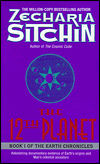
|

|
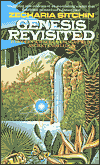
|
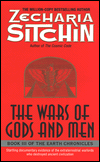
|

|

|
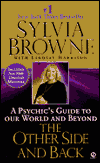
|

|
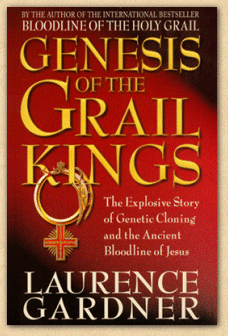
|
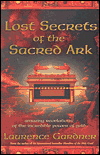
|
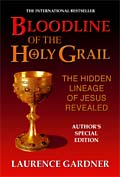
|
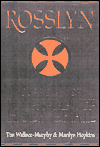
|
Sign our guest book.
View My Guestbook
 Sign My Guestbook
Sign My Guestbook![]()
Search this site
Our search Engine does not search for the links in this site, only words in the text.
NO PART OF THIS SITE MAY BE COPIED OR REPRODUCED, IN WHOLE OR IN PART,
WITHOUT THE EXPRESS WRITTEN PERMISSION OF THE WEBMASTER...
© COPYRIGHT 1999 - 2009 c.i.c. ALL RIGHTS RESERVED.
This site is protected by the "Fair Use" section of the Copyright Law. ie: Educational
If your site is not Strictly Masonic in nature,
We kindly ask that you do not link to
this site without permission of the Web Master or under the guidelines set forth here
...
see Legal Issues
This page has been visited times Since November 31st, 1999